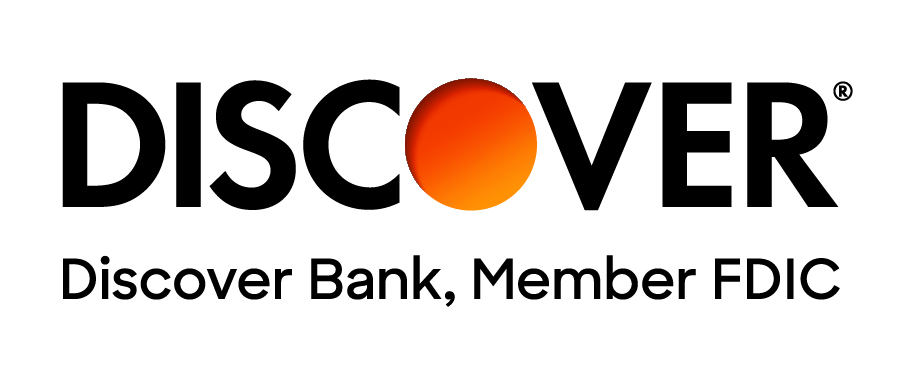The Senate Health, Education, Labor and Pensions (HELP) committee released a comprehensive set of proposals for changes to federal student aid programs on Wednesday, June 25, 2014.
Most federal student aid programs, except for military student aid programs, are authorized by the Higher Education Act of 1965 (P.L. 89-329), as amended. The Higher Education Act of 1965 must be reauthorized every 4-6 years to allow the federal student aid programs to continue. Reauthorization of the Higher Education Act of 1965 is often accompanied by significant changes to federal student aid programs. The Higher Education Act of 1965 was previously reauthorized in 1968, 1972, 1976, 1980, 1986, 1992, 1998 and 2008. (The last reauthorization, which was supposed to occur in 2003, was delayed until 2008 after Congress passed a total of 13 extension bills.)
The Higher Education Act of 1965 was scheduled to be reauthorized in 2013. However, since Congress did not pass legislation to reauthorize the Higher Education Act of 1965, an automatic one-year extension went into effect. If Congress does not pass reauthorization legislation in 2014, it will need to pass legislation to temporarily extend the act.
The 785-page draft legislative language, named the Higher Education Affordability Act, includes numerous proposals for improvements in federal student aid programs. Key proposals include improvements in consumer disclosures and loan counseling, such as a mandatory standard for financial aid award letters, requiring private student loans to be school certified, allowing bankruptcy discharge of private student loans, a change requiring prepayments to be applied to the loan with the highest interest rate, stricter regulation of for-profit colleges and a reduction in collection charges and late fees.
Cutting College Costs and Increasing Student Aid
- Restores year-round Federal Pell Grants to enable full-time students in accelerated degree programs to qualify for more than one Federal Pell Grant in an academic year, capped at 150% of the maximum Federal Pell Grant. The additional Federal Pell Grants are subject to the same lifetime eligibility restrictions as the regular Federal Pell Grants.
- Public colleges may not charge higher tuition and fees to active-duty members of the U.S. Armed Forces, their spouses and dependents than the tuition and fees charged to state residents. The eligibility for tuition rates that are no more than in-state tuition rates continues after a change in the servicemember’s active-duty status, provided that the student was enrolled prior to the change in active-duty status.
- Public colleges are also required to charge in-state tuition for homeless children and youths and foster-care children and youths who graduated from a secondary school located in the state or in an adjacent state, or obtained the recognized equivalent of a secondary school diploma from the state.
- Eliminates origination fees on Direct Subsidized and Unsubsidized Loans.
- Rolls back some of the restrictions on aid eligibility for students who do not have a high school diploma or GED.
Better Consumer Disclosures and Counseling
- Establishes a mandatory standardized financial aid award letter, similar to the current voluntary Financial Aid Shopping Sheet. All colleges and universities will be required to use the standardized financial aid award letter.
- Requires the U.S. Department of Education to create a College Scorecard web site to provide students and families with information about the affordability and value of each college receiving Title IV federal student aid funds. This information will include information about the overall average net price and the average net price in each of five income ranges, slightly more detailed than the information currently available through the U.S. Department of Education’s College Navigator web site, CollegeNavigator.gov. A key difference is the addition of information about the percentage of students in each of the five income ranges. The College Scorecard will also report several outcome measures, such as persistence rates, transfer rates, completion rates (the percentage of undergraduate students receiving a degree or certificate within 100% and 150% of the normal timeframe), the percentage of students graduating with federal and/or private student loan debt, the mean and median student loan debt at graduation and the monthly payments corresponding to the mean and median student loan debt at graduation (based on a 10-year standard repayment term).
- Establishes a new loan repayment rate metric to measure the progress and speed with which a college’s borrowers repay their federal student loan balances after entering repayment. Progress is the percentage change in the loan balance as compared with the original loan balance at repayment. (The loan balance includes accrued but unpaid interest in addition to the principal balance and capitalized interest.) Speed is the average monthly progress, namely progress divided by the number of monthly loan payments.
- Improves loan entrance and exit counseling by requiring the counseling to provide personalized information about the borrower's loans and repayment options. Also requires the loan counseling to incorporate tests of the borrower’s comprehension of the counseling. Requires more frequent notification of borrowers of their outstanding loan balances while the borrowers are enrolled in school. Requires additional loan counseling for at-risk borrowers, such as a review of repayment options every time the students borrow. Adds loan counseling for Federal Parent PLUS loan borrowers.
- Sets minimum requirements for net price calculators, such as making the calculators easier to find, requiring the net price to be the most visually prominent figure on the calculator results page and establishing privacy protections.
- Requires the U.S. Department of Education to develop a universal net price calculator that allows students and families to obtain net price figures for multiple colleges and universities after answering a single set of questions.
- Integrates information about private student loan borrowing into the National Student Loan Data System (NSLDS).
- Requires the U.S. Department of Education to disclose, for every college and university, the percentage of borrowers in each deferment status, the percentage who are delinquent (30-59, 60-89 and 90+ days), the percentage of borrowers in each repayment plan (including each repayment term option for extended repayment) and the percentage of borrowers who are negatively amortized (i.e., have a loan balance that is increasing). Adds a separate cohort default rate for Grad PLUS Loans. Adds a cohort default rate for Parent PLUS Loans (initially, a 3-year cohort default rate, but increasing to a 10-year cohort default rate starting in fiscal year 2025).
- If a college has a student default risk of 0.1 or greater, it must provide students with a minimum of a 2-week waiting period between offers of admission and the deadline for students to accept offers of admission and financial aid. The student default risk is the product of the most recent 3-year cohort default rate and the percentage of students receiving federal student loans during the previous academic year.
Improvements in Need Analysis
- The legislation increases the student income protection allowance. For example, the income protection allowance for dependent students will be increased from $6,260 in 2014-2015 to $10,260 in 2015-2016. The income protection allowance for independent students will also be increased by $4,000.
- Allows the U.S. Department of Education to use prior-prior year (PPY) income and tax data instead of prior-year (PY) date to simplify financial aid application forms.
Improvements in Borrowing
- Requires school certification of private student loans and caps the loan amount at the amount certified by the school, which may be no more than the cost of attendance minus all other aid received by the student.
- Requires loan statements to be provided to private student loan borrowers at least once per quarter while the borrower is enrolled in school.
Restrictions on Disbursements
- Adds restrictions on the use of debit cards for disbursing federal student aid. For example, colleges may not specify a preferred financial institution and may not institute denials or delays in the disbursement of credit balances based on the student’s choice of a particular financial institution. Establishes a pilot program for disbursements through the Treasury Direct Express system.
- Extends the Student Loan Sunshine Act’s bans on revenue-sharing, gifts and conflicts of interest to include debit cards, credit cards and other consumer financial products or services, not just student loans.
Improvements in Student Loan Repayment
- Streamlines the multiple loan repayment plans based on income into a single income-based repayment plan by eliminating income-sensitive repayment and income-contingent repayment. Borrowers who are currently participating in either repayment plan will be allowed to continue participating in these plans.
- Reduces the percentage of discretionary income under income-based repayment to 10% from 15% and extends eligibility to all borrowers of all federal student loans, not just recent borrowers. Effectively, this merges income-based repayment and pay-as-you-earn repayment into a single repayment plan. Borrowers may be eligible for income-based repayment if they demonstrate a partial financial hardship or if they are 150 or more days delinquent. Borrowers may continue in income-based repayment even if they no longer have a partial financial hardship.
- The repayment obligation for married borrowers under income-based repayment will be based on 50% of the combined income of the borrower and spouse. Borrowers may appeal to have the repayment obligation be based on only the borrower’s income if the borrower does not benefit from the spouse’s income.
- Bans direct loan servicers from marketing products and services to borrowers who are currently enrolled in a college or university. Allows such marketing after the borrower is no longer enrolled in college, but requires the borrower’s approval to be opt-in rather than opt-out.
- Bans lenders and servicers from requiring the use of arbitration. Also, bans lenders and servicers from requiring borrowers to waive their statutory rights and remedies.
- Prepayments are applied first to the principal balance of the loan with the highest interest rate, unless otherwise instructed by the borrower.
- Servicers may advance the due date of the next regularly scheduled payment, if a prepayment is sufficient to cover at least one additional installment payment. However, borrowers may instruct the servicer to not advance the due date. Servicers must provide borrowers with clear instructions about how to notify the lender or servicer of the borrower’s preferences.
- Servicers must allow borrowers to use electronic funds transfer (EFT) to voluntarily make automatic periodic prepayments in excess of the regularly scheduled installment payments.
- Servicers are required to send statements to borrowers at least once each billing cycle. Standardizes the minimum information that must be included in such statements. The statement must be sent to the borrower at least 21 days prior to the payment due date.
Improvements for Borrowers who are Experiencing Financial Difficulty
- Borrowers who are delinquent may be automatically enrolled in income-based repayment.
- Allows private student loans to be discharged in bankruptcy.
- Collection charges on defaulted federal education loans will be limited to the actual collection costs incurred in collecting a borrower’s defaulted federal education loans, as opposed to the average collection costs. The collection charges on a rehabilitated federal education loan will also be limited to 16% of the principal and interest balance, down from 18.5%, or the actual collection costs, whichever is less.
- For the purpose of rehabilitating a defaulted federal education loan, reasonable and affordable payments are defined to be the same as the monthly payment under income-based repayment or $5, whichever is greater.
- Improves borrower eligibility for a total and permanent disability discharge by aligning eligibility standards with similar determinations by the U.S. Department of Veterans Affairs (VA) and Social Security Administration (SSA) and eliminates reinstatement provisions for these borrowers.
- Reduces late fees on federal education loans from 6% to 4% of the past due amount and establishes other restrictions on late fees.
- Postsecondary education loans, such as federal and private student loans, may not be accelerated except in cases involving default. Lenders and servicers may not charge fees to modify or defer repayment of a postsecondary education loan.
Restrictions on Institutional Eligibility for Federal Student Aid Funds
- Changes the 90/10 rule, which currently requires that for-profit colleges get no more than 90% of their revenues from Title IV federal student aid, to an 85/15 rule that requires for-profit colleges to get no more than 85% of their revenues from any source of federal student aid funding, including military student aid in addition to Title IV federal student aid.
- Prohibits all colleges from spending federal student aid funds on advertising, recruiting and marketing activities.
- Clarifies the prohibitions on incentive compensation in securing enrollments, financial aid, performance in educational coursework, graduation and job placement.
Common Ground between Democrats and Republicans
Although there are some significant differences between Democratic and Republican priorities for reauthorization, there is also a lot of common ground. Both have proposed restoring the year-round Federal Pell Grants, simplification of the FAFSA (Free Application for Federal Student Aid), streamlining the four repayment plans based on income to a single income-based repayment plan, improving and standardizing consumer disclosures, providing more timely financial literacy training and expanding available data about student loan debt.
A key difference is that Democrats support stricter regulation of for-profit colleges while Republicans seek to block the Obama administration’s gainful employment rules for for-profit colleges. Republicans also oppose President Obama’s college-rating system. Democrats want to pass a comprehensive bill while Republicans would prefer to tackle the legislation piecemeal.
Despite these differences, there is enough agreement on a core set of changes that reauthorization is likely to occur sometime in the next 12 months, probably after the midterm elections.







